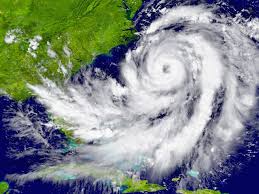DỊCH HOÀN THIỆN ĐỀ THI IELTS READING VÀ GIẢI THÍCH ĐÁP ÁN:
Cleaning up the Thames
The River Thames, which was biologically “dead” as recently as the 1960s, is now the cleanest metropolitan river in the world, according to the Thames Water Company. The company says that thanks to major investment in better sewage treatment in London and the Thames Valley, the river that flows through the United Kingdom capital and the Thames Estuary into the North Sea is cleaner now than it has been for 130 years. The Fisheries Department, who are responsible for monitoring fish levels in the River Thames, has reported that the river has again become the home to 115 species of fish including sea bass, flounder, salmon, smelt, and shad. Recently, a porpoise was spotted cavorting in the river near central London. ĐOẠN 1
Theo Công ty Nước Thames, sông Thames đã “chết” về mặt sinh học vào những năm 1960, hiện là dòng sông đô thị sạch nhất thế giới. Công ty cho biết nhờ đầu tư lớn vào việc xử lý nước thải tốt hơn ở London và Thung lũng Thames, dòng sông chảy qua thủ đô Vương quốc Anh và Cửa sông Thames đổ vào Biển Bắc giờ đã sạch hơn so với 130 năm trước. Cục Thủy sản, cơ quan chịu trách nhiệm giám sát mức cá ở sông Thames, đã báo cáo rằng dòng sông này một lần nữa trở thành ngôi nhà của 115 loài cá bao gồm cá vược, cá bơn, cá hồi, cá mè và cá trích. Gần đây, một con cá heo được phát hiện đang bơi lội thích thú trên sông gần trung tâm London.
But things were not always so rosy. In the 1950s, sewer outflows and industrial effluent had killed the river. It was starved of oxygen and could no longer support aquatic life. Until the early 1970s, if you fell into the Thames you would have had to be rushed to the hospital to get your stomach pumped. A clean-up operation began in the 1960s. Several Parliamentary Committees and Royal Commissions were set up, and, over time, legislation has been introduced that put the onus on polluters-effluent-producing premises and businesses to dispose of waste responsibly. In 1964 the Greater London Council (GLC) began work on greatly enlarged sewage works, which were completed in 1974. ĐOẠN 2
Nhưng mọi thứ không phải lúc nào cũng màu hồng như vậy. Vào những năm 1950, nước thải từ cống rãnh và nước thải công nghiệp đã giết chết dòng sông. Nó bị thiếu oxy và không còn khả năng hỗ trợ đời sống thủy sinh. Cho đến đầu những năm 1970, nếu bạn rơi xuống sông Thames, bạn sẽ phải nhanh chóng được đưa đến bệnh viện để rửa ruột. Một hoạt động dọn dẹp bắt đầu vào những năm 1960. Một số Ủy ban Nghị viện và Ủy ban Hoàng gia đã được thành lập, và theo thời gian, luật pháp đã được ban hành quy định trách nhiệm xử lý chất thải một cách có trách nhiệm cho các cơ sở và doanh nghiệp thải ra nước thải gây ô nhiễm. Năm 1964, Hội đồng Đại Luân Đôn (GLC) bắt đầu thực hiện các công trình xử lý nước thải được mở rộng rất nhiều, được hoàn thiện vào năm 1974.
The Thames clean up is not over, though. It is still going on, and it involves many disparate arms of government and a wide range of non-government stakeholder groups, all representing a necessary aspect of the task. In London’s case, the urban and non-urban London boroughs that flank the river’s course each has its own reasons for keeping “their” river nice. And if their own reasons do not hold out a sufficiently attractive carrot, the government also wields a compelling stick. The 2000 Local Government Act requires each local borough to "prepare a community strategy for promoting or improving the economic, social and environmental well-being of their area.” And if your area includes a stretch of river, that means a sustainable river development strategy. ĐOẠN 3
Tuy nhiên, việc dọn dẹp sông Thames vẫn chưa kết thúc. Nó vẫn đang diễn ra, và nó liên quan đến nhiều bên khác nhau của chính phủ và một loạt các nhóm phi chính phủ liên quan, tất cả đều đại diện cho một khía cạnh cần thiết của nhiệm vụ này. Trong trường hợp của Luân Đôn, các quận đô thị và phi đô thị của Luân Đôn nằm dọc theo dòng sông, mỗi quận đều có lý do riêng để giữ cho dòng sông “của họ” đẹp đẽ. Và nếu lý do riêng của họ không đưa ra được một củ cà rốt đủ hấp dẫn, chính phủ cũng sẽ sử dụng một cây gậy thuyết phục. Đạo luật Chính quyền địa phương năm 2000 yêu cầu mỗi quận địa phương phải "chuẩn bị một chiến lược cộng đồng để thúc đẩy hoặc cải thiện phúc lợi kinh tế, xã hội và môi trường ở khu vực của họ.” Và nếu khu vực của bạn bao gồm một đoạn sông, điều đó có nghĩa là một chiến lược phát triển dòng sông bền vững.
* cà rốt là phần thưởng, lợi ích, cây gậy là hình phạt
Further legislation aimed at improving and sustaining the river’s viability has been proposed. There is now legislation that protects the River Thames, either specifically or as part of a general environmental clause, in the Local Government Act, the London Acts, and the law that created the post of the mayor of London. And these are only the tip of an iceberg that includes industrial, public health and environmental protection regulations. The result is a wide range of bodies officially charged, in one way or another, with maintaining the Thames as a public amenity. For example, Transport for London - the agency responsible for transport in the capital - plays a role in regulating river use and river users. They now are responsible for controlling the effluents and rubbish coming from craft using the Thames. This is done by officers on official vessels regularly inspecting craft and doing spot checks. Another example is how Thames Water (TW) has now been charged to reduce the amount of litter that finds its way into the tidal river and its tributaries. TW’s environment and quality manager, Dr. Peter Spillett, said: “This project will build on our investment which has dramatically improved the water quality of the river. ĐOẠN 4

1. Mua bộ đề gần 400 bài ielts reading - Dịch và giải chi tiết Chỉ 199k bao gồm toàn bộ đề trong bộ Cambridge ( từ bộ 1 -19) và nhiều đề thi thực tế ( xem danh sách 400 đề ielts reading tại đây). Xem bài mẫu tại đây, Bài mẫu 1, bài mẫu 2, bài mẫu 3. Giải đề bao gồm phần dịch bài đọc, dịch phần câu hỏi, giải thích chi tiết, ( chỉ có thể tải, in phần đề để luyện tập, phần giải chi tiết và dịch chỉ xem online).
>>>>>>> Đặc biệt tặng kèm Dịch và giải chi tiết bộ đề Ielts listening từ Cam 10-18 và tặng kèm hơn 300 đề Ielts thực tế ( không có lời giải chi tiết chỉ có đề và đáp án) ( khác với bộ 400 đề ở trên). Vui lòng điền thông tin theo form tại đây và thanh toán theo thông tin CK trong form.
2. Đặc biệt dành tặng 100 bạn hoàn thành buổi học thử miễn phí khóa học Ielts Speaking online 1 kèm 1, các bạn sẽ được tặng bộ đề 400k bài Ielts reading và bộ đề Ielts Listening bộ Cam từ 10-18 gồm bài dịch và giải chi tiết, giải thích từ vựng khó ( thời hạn sử dụng trong vòng 2 tháng). Xem thông tin khóa học Ielts Speaking online 1 kèm 1 và đăng ký học thử tại đây.
"London should not be spoiled by litter which belongs in the bin not the river." Thousands of tons of rubbish end up in the river each year, from badly stored waste, people throwing litter off boats, and rubbish in the street being blown or washed into the river. Once litter hits the water it becomes too heavy to be blown away again and therefore the rivers act as a sink in the system. While the Port of London already collects up to 3,000 tons of solid waste from the tideway every year, Thames Water now plans to introduce a new device to capture more rubbish floating down the river. It consists of a huge cage that sits in the flow of water and gathers the passing rubbish. Moored just offshore in front of the Royal Naval College at Greenwich, south-east London, the device is expected to capture up to 20 tons of floating litter each year.If washed out to sea, this rubbish can kill marine mammals, fish and birds. This machine, known as the Rubbish Muncher, is hoped to be the first of many, as the TW is now looking for sponsors to pay for more cages elsewhere along the Thames. ĐOẠN 5
Monitoring of the cleanliness of the River Thames in the past was the responsibility of a welter of agencies - British Waterways, Port of London Authority, the Environment Agency, the Health and Safety Commission, Thames Water – as well as academic departments and national and local environment groups. If something was not right, someone was bound to call foul and hold somebody to account, whether it was the local authority, an individual polluter or any of the many public and private sector bodies that bore a share of the responsibility for maintaining the River Thames as a public amenity. Although they will all still have their part to play, there is now a central department in the Environment Agency, which has the remit of monitoring the Thames. This centralisation of accountability will, it is hoped, lead to more efficient control and enforcement. ĐOẠN 6
>>>>> Xem thêm:
♦ Tổng hợp câu trả lời, câu hỏi, từ vựng của hơn 70 chủ đề Ielts Speaking part 1
♦ Tổng hợp gần 400 đề thi Ielts reading ( bao gồm dịch, giải chi tiết, từ vựng)
Questions 1-6
Some of the actions taken to clean up the River Thames are listed below.
The writer gives these actions as examples of things that have been done by various agencies connected with the River Thames.
Match each action with the agency responsible for doing it. Write the appropriate letters (A-G ) in boxes 1-6 on your answer sheet.
|
Actions to clean up the River Thames
A Operating the Rubbish Muncher B Creating Community Strategies C Monitoring the Cleanliness of the River Thames D Monitoring Fish Levels E Collecting Solid Waste from the Tideway F Creating Enlarged Sewage Works G Controlling the River Thames’ Traffic |
|
Example Answer The Fisheries Department D |
1.The Environment Agency
2. Transport for London
3. The Greater London Council
4. Thames Water
5. Port of London
6. Local Boroughs
Questions 7 -14
Do the following statements agree with the views of the writer of the reading passage on Cleaning up the Thames?
In Boxes 7 -14 write:
YES if the statement agrees with the writer
NO if the statement doesn’t agree with the writer
NOT GIVEN if it is impossible to say what the writer thinks about this
7. The Thames is now cleaner than it was in 1900.
8. Swimming in the Thames now poses no health hazards.
9. It is now mainly the responsibility of those who pollute the Thames to clean their waste up.
All local London boroughs are now partly responsible for keeping the Thames clean.
11. Transport for London now employs a type of River Police to enforce control of their regulations.
12. Rubbish Munchers are now situated at various locations on the Thames.
13. Previously no one department had overall responsibility or control for monitoring the cleanliness of the Thames.
14. British Waterways will no longer have any part in keeping the Thames clean.
ĐÁP ÁN, GIẢI CHI TIẾT và DỊCH HOÀN THIỆN ĐỀ THI IELTS READING:
Cleaning up the Thames
Questions 1-6
Some of the actions taken to clean up the River Thames are listed below.
The writer gives these actions as examples of things that have been done by various agencies connected with the River Thames.
Người viết đưa ra những hành động này như những ví dụ về những điều đã được thực hiện bởi các cơ quan khác nhau có liên quan đến sông Thames.
Match each action with the agency responsible for doing it. Write the appropriate letters (A-G ) in boxes 1-6 on your answer sheet.
1.C The Environment Agency
Giải thích: đoạn 6
Monitoring of the cleanliness of the River Thames in the past was the responsibility of a welter of agencies - British Waterways, Port of London Authority, the Environment Agency, the Health and Safety Commission, Thames Water – as well as academic departments and national and local environment groups. If something was not right, someone was bound to call foul and hold somebody to account, whether it was the local authority, an individual polluter or any of the many public and private sector bodies that bore a share of the responsibility for maintaining the River Thames as a public amenity. Although they will all still have their part to play, there is now a central department in the Environment Agency, which has the remit of monitoring the Thames.
2.G Transport for London
Giải thích: đoạn 4
For example, Transport for London - the agency responsible for transport in the capital - plays a role in regulating river use and river users.
3.F The Greater London Council
Giải thích: đoạn 2
In 1964 the Greater London Council (GLC) began work on greatly enlarged sewage works, which were completed in 1974.
Questions 7 -14
Do the following statements agree with the views of the writer of the reading passage on Cleaning up the Thames?
In Boxes 7 -14 write:
YES if the statement agrees with the writer
NO if the statement doesn’t agree with the writer
NOT GIVEN if it is impossible to say what the writer thinks about this
7.Y The Thames is now cleaner than it was in 1900.
Sông Thames hiện sạch hơn so với năm 1900.
Giải thích: đoạn 1, Báo cáo này viết năm 2000, bài nói sông Thames sạch hơn 130 năm qua nên sông Thame sạch hơn vào năm 1900 là đúng
The company says that thanks to major investment in better sewage treatment in London and the Thames Valley, the river that flows through the United Kingdom capital and the Thames Estuary into the North Sea is cleaner now than it has been for 130 years.
8. NG Swimming in the Thames now poses no health hazards.
Bơi ở sông Thames hiện không gây nguy hiểm cho sức khỏe.
Answer:
1. C
2. G
3. F
4. A
5. E
6. B
7. YES
8. NOT GIVEN
9. NO
10. YES
11. YES
12. NO
13. YES
14. NO
1. Mua bộ đề gần 400 bài ielts reading - Dịch và giải chi tiết Chỉ 199k bao gồm toàn bộ đề trong bộ Cambridge ( từ bộ 1 -19) và nhiều đề thi thực tế ( xem danh sách 400 đề ielts reading tại đây). Xem bài mẫu tại đây, Bài mẫu 1, bài mẫu 2, bài mẫu 3. Giải đề bao gồm phần dịch bài đọc, dịch phần câu hỏi, giải thích chi tiết, ( chỉ có thể tải, in phần đề để luyện tập, phần giải chi tiết và dịch chỉ xem online).
>>>>>>> Đặc biệt tặng kèm Dịch và giải chi tiết bộ đề Ielts listening từ Cam 10-18 và tặng kèm hơn 300 đề Ielts thực tế ( không có lời giải chi tiết chỉ có đề và đáp án) ( khác với bộ 400 đề ở trên). Vui lòng điền thông tin theo form tại đây và thanh toán theo thông tin CK trong form.
2. Đặc biệt dành tặng 100 bạn hoàn thành buổi học thử miễn phí khóa học Ielts Speaking online 1 kèm 1, các bạn sẽ được tặng bộ đề 400k bài Ielts reading và bộ đề Ielts Listening bộ Cam từ 10-18 gồm bài dịch và giải chi tiết, giải thích từ vựng khó ( thời hạn sử dụng trong vòng 2 tháng). Xem thông tin khóa học Ielts Speaking online 1 kèm 1 và đăng ký học thử tại đây.

.png)

.jpg)




